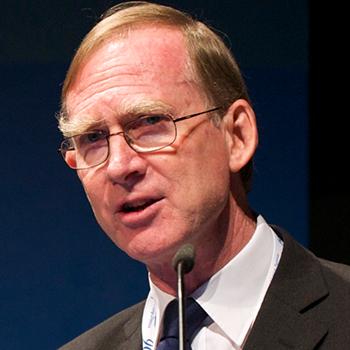“The Union model is based on asking and answering three questions: How many patients are coming in? Who are they? And what happens to them?”

Tony Harries does not have to look far to find an example that bears out his confidence in applying The Union’s TB control model to managing and monitoring other diseases. In Malawi, where he worked for more than 20 years, there are 450,000 people alive on antiretroviral treatment (ART) as a result of this standardised and accountable system.
"The Union model uses a simple evaluation system based on asking and answering three questions: How many patients are coming in? Who are they? And what happens to them?" says Harries, who has been a senior advisor to The Union since 2008 and Director of the Department of Research and Centre for Operational Research since 2009.
The data generated through these questions provide the basis for the accountability that is one of the key features of the model, created by The Union and branded by the World Health Organization as DOTS (directly observed treatment, short course). Structured supervision with close monitoring and evaluation ensures that data are accurate and as Harries says" this information tells you not only about numbers of people on treatment and lives saved, but it also provides programmes with the means to do accurate drug forecasting without which a continued supply of drugs and consumables cannot be guaranteed.
In 1996, when Harries became an advisor to the Malawi National TB Programme (NTP), the country was already in the grips of a devastating HIV/AIDS epidemic. TB case notifications had exploded and within 15 years had increased from 5,000 per annum to almost 30,000 per annum.
Harries recalls the desperate battle against HIV-associated TB and HIV/AIDS in Malawi as "a terrible time. There was no treatment for HIV/AIDS, nothing we could do for affected people except to offer compassion. People were simply dying".
The 2000 International AIDS Conference in Durban proved to be a watershed moment. The conference had never been held in Africa before. The anger and outrage at the lack of antiretroviral treatment (ART) in sub-Saharan Africa was palpable, the speeches eloquent.
"It was clearly time to do something about ART in Africa", Harries says, "but in a country like Malawi it couldn't be based on the Western model, which is doctor-run, laboratory -based and too expensive".
Back in Malawi, Harries and his colleagues in the TB and HIV/AIDS programme drew up a plan for scaling up ART using the same approach as for TB control: a simple standardised system; one first-line regimen; nurse-led monitoring; quarterly supervision and evaluation to find out how many patients are being enrolled, who are they and what happens to them. They wrote a concept paper that was published in The Lancet and this was used as a blueprint and one of the core components of a US$ 200 million grant from the Global Fund to Fight AIDS, TB and Malaria (The Global Fund) to provide ART to affected communities – the largest ever awarded at that time.
In 2004 Harries joined Malawi's HIV/AIDS programme, and ART was scaled up rapidly in the country using this approach. Between 2004 and 2013, the programme has grown to 650 facilities providing ART and 600,000 people ever enrolled on treatment.
"When we started, not everyone approved of having only one treatment regimen for all patients and the simple, standardized approach, but it has worked extremely well", says Harries.
The Union, in collaboration with the Malawi Ministry of Health and the Baobab Health Trust, has also been involved in implementation projects using the DOTS model to monitor diabetes and hypertension and a chronic care clinic that serves patients with asthma, diabetes, cardiovascular disease and epilepsy.
A tireless researcher and lecturer, as well as a widely published author, Prof Anthony David Harries was appointed Officer of the Order of the British Empire (OBE) for his services to tuberculosis research in Africa. At The Union, the Centre for Operational Research has published more than 300 research and opinion papers since 2009 including work by operational research fellows and participants in the OR courses developed by The Union and Medécins Sans Frontières.
"The amazing thing about The Union model is that we can even use it to measure the success of something like our operational research courses", says Harries.
But what pleases him most is the thought of the 450,000 people living with HIV who would have died were it not for this simple, practical approach to disease control.
Home page photo: Tony Harries with a Village Chief and his village register
